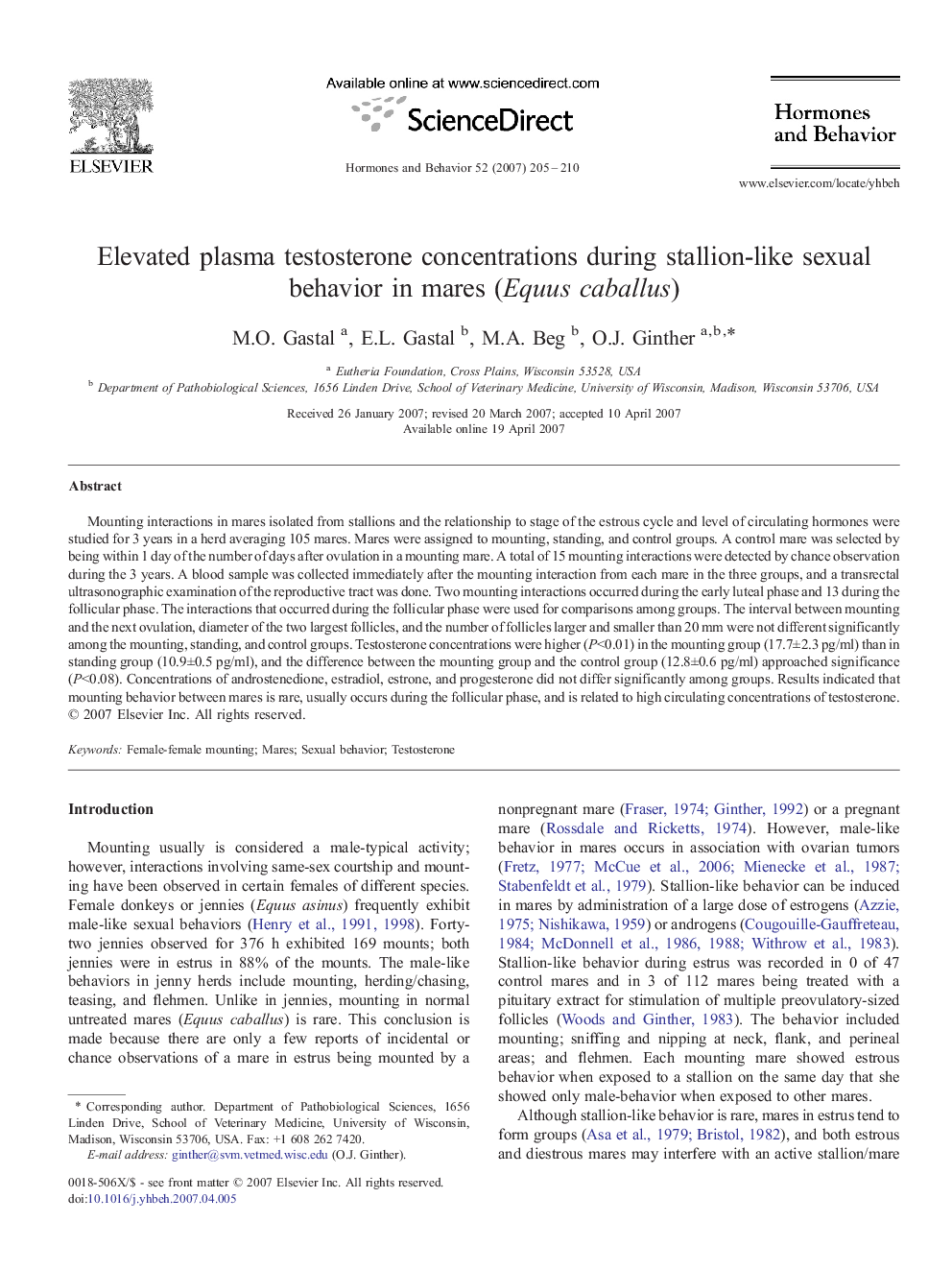| Article ID | Journal | Published Year | Pages | File Type |
|---|---|---|---|---|
| 323304 | Hormones and Behavior | 2007 | 6 Pages |
Mounting interactions in mares isolated from stallions and the relationship to stage of the estrous cycle and level of circulating hormones were studied for 3 years in a herd averaging 105 mares. Mares were assigned to mounting, standing, and control groups. A control mare was selected by being within 1 day of the number of days after ovulation in a mounting mare. A total of 15 mounting interactions were detected by chance observation during the 3 years. A blood sample was collected immediately after the mounting interaction from each mare in the three groups, and a transrectal ultrasonographic examination of the reproductive tract was done. Two mounting interactions occurred during the early luteal phase and 13 during the follicular phase. The interactions that occurred during the follicular phase were used for comparisons among groups. The interval between mounting and the next ovulation, diameter of the two largest follicles, and the number of follicles larger and smaller than 20 mm were not different significantly among the mounting, standing, and control groups. Testosterone concentrations were higher (P<0.01) in the mounting group (17.7±2.3 pg/ml) than in standing group (10.9±0.5 pg/ml), and the difference between the mounting group and the control group (12.8±0.6 pg/ml) approached significance (P<0.08). Concentrations of androstenedione, estradiol, estrone, and progesterone did not differ significantly among groups. Results indicated that mounting behavior between mares is rare, usually occurs during the follicular phase, and is related to high circulating concentrations of testosterone.
